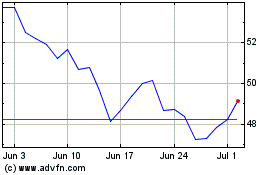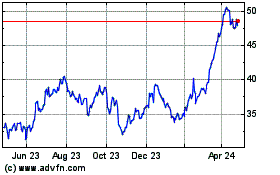Nissan and Renault Plan Post-Merger Integration Without a Merger -- Heard on the Street
May 28 2020 - 9:29AM
Dow Jones News
By Stephen Wilmot
Can companies cut their way out of a crisis? And has this crisis
become so bad that radical cultural change is possible? In the case
of Nissan Motor Co. and its global car-making alliance with Renault
SA and Mitsubishi Motors Corp., it is easier to be optimistic about
the first question than the second.
As part of a much-anticipated transformation plan, Nissan said
Thursday it would revive profits by shrinking its production
capacity by 20%, particularly in areas like Europe and Southeast
Asia that it no longer considers "core." On Friday, Renault will
announce its own plan, with the need for factory closures awkwardly
set against the backdrop of a $5 billion rescue loan package backed
by the French government, its anchor shareholder.
The cuts will be made possible by a much deeper level of
cooperation. According to a high-level strategy unveiled Wednesday,
each alliance member will focus on its strengths according to a
"leader-follower" principle, whether in terms of vehicle type,
technology or region. So Nissan will take the lead on larger cars
and the U.S., Chinese and Japanese markets; Renault on smaller cars
in Europe and South America; and Mitsubishi on big plug-in hybrids
and South East Asia.
Reducing costs is a tried and tested strategy for reviving car
makers, though not a quick one. Better cash flows can then be
plowed into new products, stimulating a sales revival and even
better cash flows. Nissan went through something like this virtuous
cycle in the early 2000s under former boss Carlos Ghosn, whom it
now blames for its current problems. Renault's French peer Peugeot
is a more recent example: Having made massive layoffs in 2012
following the euro crisis, it is now one of the most profitable
mass-market car makers in the world.
What has no precedent is the kind of industrial collaboration
with which Nissan and Renault hope to achieve their cuts. They want
to share not just vehicle "platforms" or underpinnings -- as almost
40% of their cars already do -- but also much of its upper body
too. They even intend to share factories where necessary to improve
capacity utilization. Mitsubishi, which only joined the alliance in
2016, is along for part of the ride.
It feels like a postmerger integration plan without the merger.
Alliance chairman Jean-Dominique Senard again ruled out a
full-blown tie-up Wednesday. But keeping their assets and profits
separate means the leadership teams will be left constantly
balancing interests to make sure the benefits of integration are
spread equally. The risk is that the plan's strictly rational
approach to capital allocation degenerates, as it has before, into
horse-trading or recriminations.
This risk is heightened by the nationalist tone of contemporary
geopolitics. Late Tuesday, France's President Emmanuel Macron
announced an EUR8 billion ($8.79 billion) package of post-Covid
measures to support the country's auto industry, including
Renault's loan guarantee and extra subsidies for electric vehicles.
In exchange, he wants France to be a center for their production,
and for Renault to invest in a European battery company.
Electric vehicle technology, which Nissan and Renault both
pioneered and see as strategic, is a potential flashpoint for
political tensions within the alliance. Each claimed some form of
leadership on the electric powertrain on Wednesday. In this, as in
so many other elements of the alliance, keeping everyone happy will
be anything but easy.
Write to Stephen Wilmot at stephen.wilmot@wsj.com
(END) Dow Jones Newswires
May 28, 2020 09:14 ET (13:14 GMT)
Copyright (c) 2020 Dow Jones & Company, Inc.
Renault (EU:RNO)
Historical Stock Chart
From Mar 2024 to Apr 2024

Renault (EU:RNO)
Historical Stock Chart
From Apr 2023 to Apr 2024
